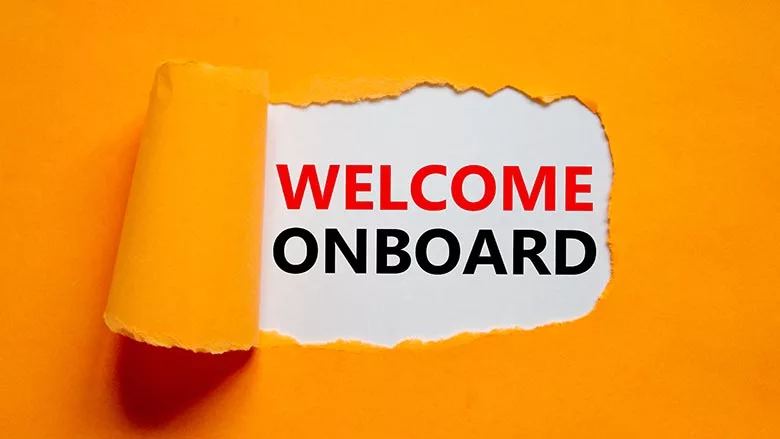Keeping the Fire Burning in New Hires

Photo credit: Dzmitry Dzemidovich / iStock / Getty Images Plus via Getty Images
Maintaining new employee motivation is a critical aspect of successful employee onboarding and retention. When a new employee joins an organization, they bring with them an elevated level of enthusiasm, energy, and eagerness to learn. However, this motivation can quickly fade if the organization fails to provide support and opportunities for growth.
In anticipation of their first day, a new team member is usually brimming with excitement and eagerness to impress, but it is not just the new hire who has a sparkle. On our end, we gear up to welcome them, fine-tuning training presentations and prepping some company swag. As the office artist creates a welcome note on the white board, the atmosphere hums with shared anticipation. It’s fun and exciting for everyone, and it is also important work, setting the stage for a potentially transformative journey.
On their first day, an almost tangible energy radiates from a new team member. They are eager to prove their skills and show their new boss what they can do. This embodies the essence of what I call “new employee energy”—a potent force of drive and eagerness that supports solution-oriented thinking, fosters creativity, and accelerates learning. It's like a superpower.
How we wreck new employee energy
While new employee energy is powerful, it is not an eternal flame. As the novelty of first-day experiences, onboarding, and training subsides, the allure can fade, allowing the employee to slip into workplace monotony.
Employers also drop the ball when it comes to new hires. We harness just enough of their initial energy to help equip them with the fundamental skills, leaving the remaining spark to fizzle out. It's ironic that while we vigilantly conserve tangible resources like materials, labor, and cash, we often overlook the potent yet intangible resource of new employee energy.
To extend the effects of that energy, here are some things to try.
Communicate expectations and goals
Expectation gaps lead to performance gaps. Neglecting to set and communicate clear expectations is the most common reason for employee performance problems … and it’s the fault of the leader. That stings a bit, doesn’t it? To get alignment and prevent confusion, the expectations must be explained up front.
In addition to job-specific skills, individuals thrive when they fully comprehend their role's purpose and success metrics. And employees should understand not just their position’s goals, but also the goals of the department and company. The broader perspective of how their efforts impact the bigger goals promotes a sense of contribution, which helps to preserve their new employee energy.
Build relationships
Magical momentum can happen when a team connects with their leader on a personal level. They cannot be expected to be invested in the future of the company without a personal connection to the vision creator. They will not give their all for a distant figure who barely engages in occasional chit-chat. But for someone who takes the time to know them, share personal stories, and ensure they feel valued and supported, they will give their all.
We need to grow our people to grow our business. And to supercharge the growth of our people, we need to build relationships. Start with management by walking around coupled with one-on-one interactions like lunches or coffee chats that are more conversation than business meeting. This will foster a mentorship atmosphere, strengthening bonds and fanning the flames of excitement and engagement.
Listen and give feedback
Within the minds of our team members are ideas that could catapult the business way beyond even leadership’s vision for it. We sometimes inadvertently stifle these ideas when we fail to ask for them or fail to foster an environment conducive to sharing improvements.
An engaged, energized employee is not going to keep providing ideas if they are either not heard or always receive pushback, like being told there’s nothing wrong with how things are now. An egocentric leader who insists on every idea being only theirs fosters a business that can only grow to the extent of their own imagination. This kills the energy and ambition of the team, leading them to think, “why bother trying to make anything better when the boss is just going to strike it down?”
Recognize them
Employees need to feel seen and appreciated. Every day, they contribute to the success of the company, and a simple acknowledgment can significantly boost their determination. Grand gestures like an Employee of the Year award are great, but frequent small, personal recognitions work better to keep employee energy up.
Leaders should make it a priority to set aside time for recognition, ideally daily or weekly. During this time, things can be done like writing a personal note, seeking out an employee to commend on their excellent work, and spreading the word to enable others to recognize their achievements as well. Keep in mind that some people do not enjoy fanfare, so we should consciously adapt our approach based on individual preferences. The goal is to nourish their energy, and if the recognition method makes them uncomfortable, it could backfire.
In conclusion, realize that maintaining employee energy is important. By implementing these strategies with both new and existing team members, we can ignite a spark of energy and fan it into a roaring blaze. Good employees come pre-motivated. Our task is to avoid demotivating them and, instead, periodically re-motivate them. This is the vital work of company leaders, not just to retain employees and reduce turnover rates, but to cultivate a team of individuals who feel both comfortable and empowered to strive and expand, pushing themselves, their leaders, and their company to be better.
Looking for a reprint of this article?
From high-res PDFs to custom plaques, order your copy today!









